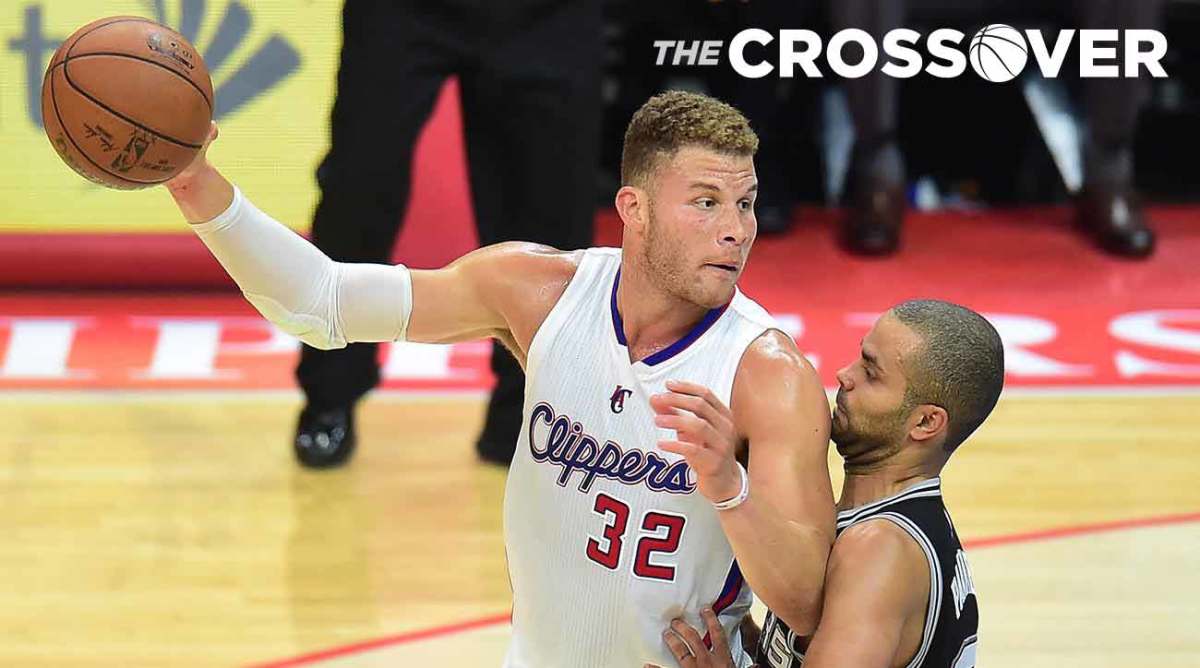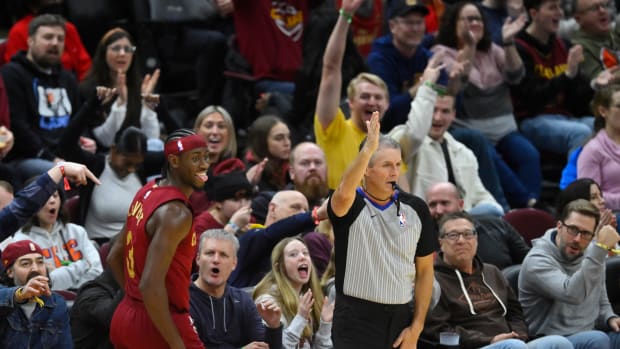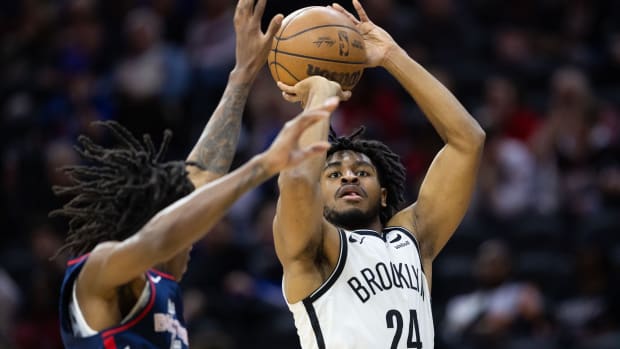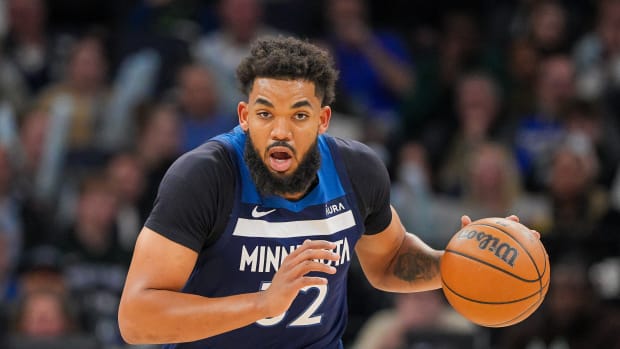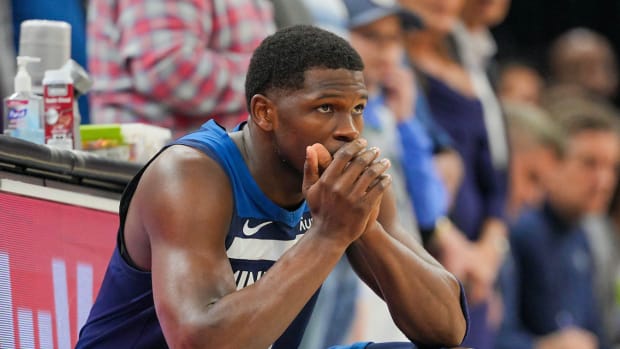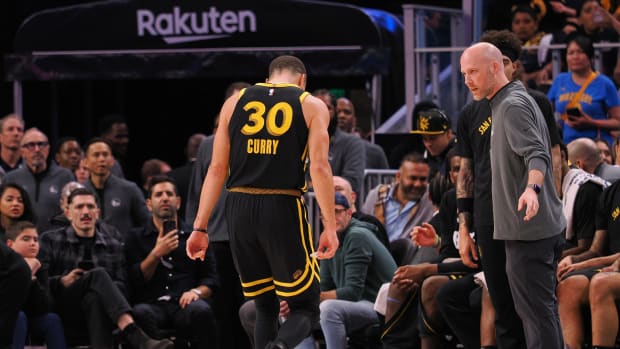Blake Griffin, The NBA's Ultimate Facilitator
Compatibility is a basketball talent and Blake Griffin, through his years of gradual refinement, has become its champion. There are brilliant players all around the NBA who thrive with control and waver without it. Griffin is a different sort. The Clippers can call on him to run an offense to efficiency when needed, as in Chris Paul’s absence. Jamal Crawford or Austin Rivers bring the ball up the floor only to hand it off to Griffin, who initiates pick-and-rolls and creates for his teammates off the dribble as a fluid point forward. He is stellar in this role.
Griffin has even more to offer, though, by doing slightly less. Plug Paul back into the lineup and Griffin assumes an entirely different function. Gone is the creative freedom of first-option playmaking and that inherent purpose when holding the ball. Instead, the full measure of Griffin’s skill is applied to enhancing the work of another star. Paul initiates, Griffin facilitates.
In the superteam era, there may be no more valuable quality in a player than this. Beyond Griffin’s considerable highlight filmography and jarring production is the game of a superstar who fits. High-level players, by type, tend to want a certain level of direct authorship in their team’s operations. Not only is Griffin willing to defer it, but able to do so while remaining very much involved. As the skill sets of multiple superstars compound, Griffin thrives. He is the NBA’s best facilitator—a natural thoroughfare for building the momentum from one action to the next.
It takes an uncanny grasp of the game to work as Griffin does. A pick-and-roll with Paul will often position him to receive a pass in the middle of the floor with an entire defense stationed around him. Within a fraction of a second after the catch, Griffin has surveyed his teammates' positions, measured up the defense's rotational intentions, and let loose a pass to the open man. All of the complexity and randomness and furious athleticism of an NBA possession is pierced by the mind of a player that has barely registered the feel of leather on his fingertips.
These openings exist because of Griffin. Defenses fold on their primary responsibilities once he reaches the free throw line, intent to draw a wall between one of the game's great finishers and the rim. His angle is unique; Paul may be a master tactician, but his particular role in this creative process and height relative to a collapsing defense don't afford him the same passing angles. It's up to Griffin to work over a defense from within—first by posing enough of a threat to trigger its frantic help and then by maneuvering inside its formation to find the best possible inroad.
SI.com's Top 100 NBA players of 2017
Dynamic reads are required. Griffin's most frequent targets tend not to stay where the defense leaves them. J.J. Redick's man might edge in from the corner to help cut off a rolling Griffin, only to turn back and find Redick streaking to the top of the key. DeAndre Jordan's defender is often forced to step up to contain Griffin, freeing the seven-footer to slink under the basket to the opposite post for a lob. That the circumstances shift constantly gives Griffin fresh, productive angles at every turn—if only because he has the presence to process so many different scenarios.
That the Clippers can redirect their offense to all of these possible endpoints through Griffin is what makes them so unpinnable. Possessions extend with his involvement; the very defensive pressure that might bring another team to reset instead becomes Griffin's point of leverage. The ball finds him in a pinch and hums along to its final destination:
Designs for a team to maximize its best players can sometimes conflict with a broader, philosophical want to share the ball. Griffin is the bridge between. His presence allows for Paul to create without pressing and for Jordan to be imminently accessible. Moreover, his function as a secondary playmaker toggles defenses in a way that provokes disorder. Most NBA players are capable of locking in defensively when their assigned man has the ball. When a possession moves elsewhere, that focus relaxes—the defender drifts a step further from his mark, his hands drop, and his attention is tugged by competing responsibilities in help. Griffin and the Clippers find opportunity in that exhale. Often you'll see Paul or Redick pitch the ball to Blake only to dart back to retrieve it after waiting a single beat. The dribble hand-off that ensues is a pain to cover, particularly when the momentary ease of the defender puts them a step behind the action:
The NBA has increasingly become a dribble hand-off league due to the power of these kinds of exchanges. Griffin complicates matters further for the defense, of course, by taking a wide base and a smart angle on his screen. The pass itself is more a product of timing than vision, though there's still something to be said for the accounting Griffin goes through on each of these sequences. If the defender chasing Paul or Reddick is locked in step, he might keep the ball to pivot into some other action. If Griffin feels the defender on his back leave early to help contain the hand-off, he can counter spin into a clear runway. It pays to have the best ball-handling big in the league execute even the simplest of actions.
Superstars, in general, rarely get enough credit for their mastery of the game's smallest details. Griffin can supply the spectacular. Yet on a play-by-play basis, he also offers expert internal logistics to one of the league's most potent offenses. He does so without wasting possessions (Griffin's 7.5% true turnover rate last season is stunning for a player in his role) and without creating complications. Passes come and go through his hands in almost equal measure while most possessions are improved with his involvement. Griffin is simply the best in the league at what he does: facilitate, create, and find harmony with every sort of talented player around him.






























